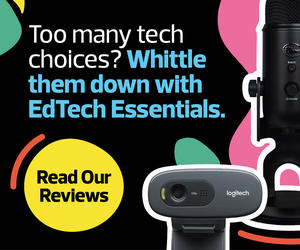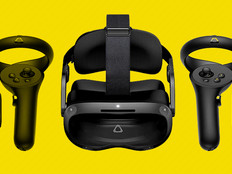From Edge to Essential
While peripherals have been at the edge of educational priorities for the past few years, the transition to remote learning last year brought them to the forefront of the conversation. Adam Garry, senior director of education strategy for Dell Technologies, notes that “what we’re seeing here now is a big historic event that’s helped drive the conversation. For ten years, we’ve been saying that hybrid learning should be the next iteration, but the tipping point is that everyone suddenly needed a device — it was no longer just at the leadership level.”
The result is more than simply a rush to purchase new peripherals. For Garry, it raises a critical question: “How do we create the mindset in people to identify the right technologies?”
In part, delivering positive peripheral outcomes depends on the technology that underpins the primary peripheral tools teachers and students need. “Behind the scenes, you need really solid Wi-Fi in place, along with screen sharing software to support peripheral devices and the move to a one-to-one learning environment that extends beyond the classroom,” says Dell Senior Education Strategist Jeremiah Okal-Frink. He also points to increasing use of tools such as green screens and high-quality lighting to improve lesson recordings. “Teachers are almost like TV broadcasters,” he says. “They need to have all the necessary technology at home and in the classroom.”
MORE ON EDTECH: A high school history teachers shares her must-have educational technology.
Which Peripherals Are Schools Purchasing?
Four broad categories of peripherals are now a priority for schools: monitors, cameras, headsets and interactive displays. These tools work to improve all learning models. Now that educators and students have incorporated these technologies into teaching and learning, it may be impossible to go back to an environment where they aren’t used.
Monitors: “A secondary monitor is now a must-have for teachers,” says Phyall, who notes that his district is making it a priority to equip teachers with two screens. According to Garry, “We’re also seeing a huge increase in the number of monitors, with many teachers using two or three at the same time. Teachers also need smart docking abilities that let them plug in HDMI and go, while also allowing them to drag and drop across multiple screens.”
Cameras: While plug-and-play web cameras with features such as autofocus and lighting adjustment are essential for hybrid learning, Okal-Frink notes that teachers “need more than a laptop with a camera to encourage interaction and embrace a flexible learning approach.” Instead, he suggests the use of a camera attached to the teacher’s main display in addition to a mobile device equipped with a second camera. This allows educators to move around the room within the visual range of both in-person and remote students.
On the student side, Phyall points to the potential use of document cameras. He notes that when his daughter used a document camera in kindergarten, the teacher could see her writing in real-time. “It would be perfect if every child had that,” he says.
Headsets: With staff and students often working and learning in less-than-ideal locations — such as crowded houses or acoustically flawed classrooms — the right headsets are critical. “Initially we had cheap headphones, but we need people to be comfortable, especially the staff,” Phyall says. “Now we’re investing in headsets and softphones for all teachers.” The comfortable fit is fundamental; Phyall notes that staff can choose in-ear or over-the-ear options. There’s also a growing push for kid-sized peripherals that offer a better fit for small ears, he says.
Interactive Displays: In remote and hybrid learning environments, teachers need ways to interact with and engage students anywhere. As a result, interactive display technologies are a must-have for effective education. According to Phyall, while this often takes the form of tools like Promethean interactive whiteboards, there’s also a push for interactive tablets. “Many of our science and math teachers have asked for Wacom tablets,” he says, “because while they’re using their cameras, they also want to sketch or calculate things in real time, instead of using their mouse.”
Empowering the Peripheral Process Beyond Remote Learning
Beyond the basics and their support peripheral overlays, however, it’s critical to consider the long-term impacts of technology on education as a whole.
“The danger right now is to just move forward without considering the learning model itself,” says Okal-Frink. Sidestepping this risk requires IT leaders to consider potential pitfalls, such as student privacy and data security, and make consistent peripheral adoption plans that outlast current pandemic pressures. With classrooms likely to persist with virtual elements for the foreseeable future, peripherals deployed as part of sustainable frameworks rather than stop-gap solutions offer a way to build on current challenges and deliver improved outcomes.
Peripherals, now a priority for effective K–12 learning, offer more than a way to defray pandemic disconnect. Integrated as part of a larger plan for educational evolution, these technologies help pave the way for improved teacher efficacy, enhanced student engagement and increased operational agility.
DISCOVER: New technologies shape the future of learning in K–12 education.











